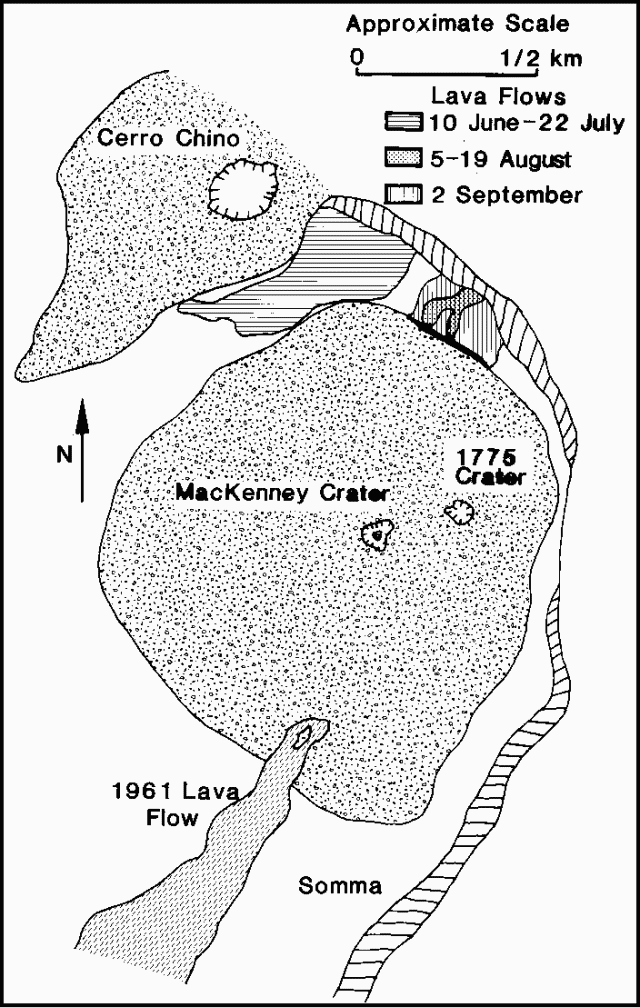Report on Pacaya (Guatemala) — August 1984
Scientific Event Alert Network Bulletin, vol. 9, no. 8 (August 1984)
Managing Editor: Lindsay McClelland.
Pacaya (Guatemala) Summit-area lava production continues
Please cite this report as:
Global Volcanism Program, 1984. Report on Pacaya (Guatemala) (McClelland, L., ed.). Scientific Event Alert Network Bulletin, 9:8. Smithsonian Institution. https://doi.org/10.5479/si.GVP.SEAN198408-342110
Pacaya
Guatemala
14.382°N, 90.601°W; summit elev. 2569 m
All times are local (unless otherwise noted)
During December 1983 and the next 2 months, activity increased and the new cone grew in height and diameter. Many lava flows emerged from below its N base. In March, two lava flows were extruded from the cone's S base while activity declined in its upper crater. On 15 May, people living near the volcano heard strong explosive activity. When the volcano was visited on 20 May, half of the active cone had been destroyed. Small pyroclastic explosions were occurring and a great quantity of vapor was being emitted. On 10 June, several lava flows were emerging in the saddle between the active crater and Cerro Chino (figure 1). In July, lava continued to fill this area and flowed W. On 5 August, Strombolian activity had increased in the upper crater. In August and early September lava emerged slightly SE of the June-July vents. On 2 September, minor pyroclastic activity was occurring from MacKenney Crater.
 |
Figure 1. Sketch map of the summit area of Pacaya, showing 1984 lava flows. Courtesy of Alfredo MacKenney. |
Geological Summary. Eruptions from Pacaya are frequently visible from Guatemala City, the nation's capital. This complex basaltic volcano was constructed just outside the southern topographic rim of the 14 x 16 km Pleistocene Amatitlán caldera. A cluster of dacitic lava domes occupies the southern caldera floor. The post-caldera Pacaya massif includes the older Pacaya Viejo and Cerro Grande stratovolcanoes and the currently active Mackenney stratovolcano. Collapse of Pacaya Viejo between 600 and 1,500 years ago produced a debris-avalanche deposit that extends 25 km onto the Pacific coastal plain and left an arcuate scarp inside which the modern Pacaya volcano (Mackenney cone) grew. The NW-flank Cerro Chino crater was last active in the 19th century. During the past several decades, activity has consisted of frequent Strombolian eruptions with intermittent lava flow extrusion that has partially filled in the caldera moat and covered the flanks of Mackenney cone, punctuated by occasional larger explosive eruptions that partially destroy the summit.
Information Contacts: A. MacKenney, Guatemala City.

